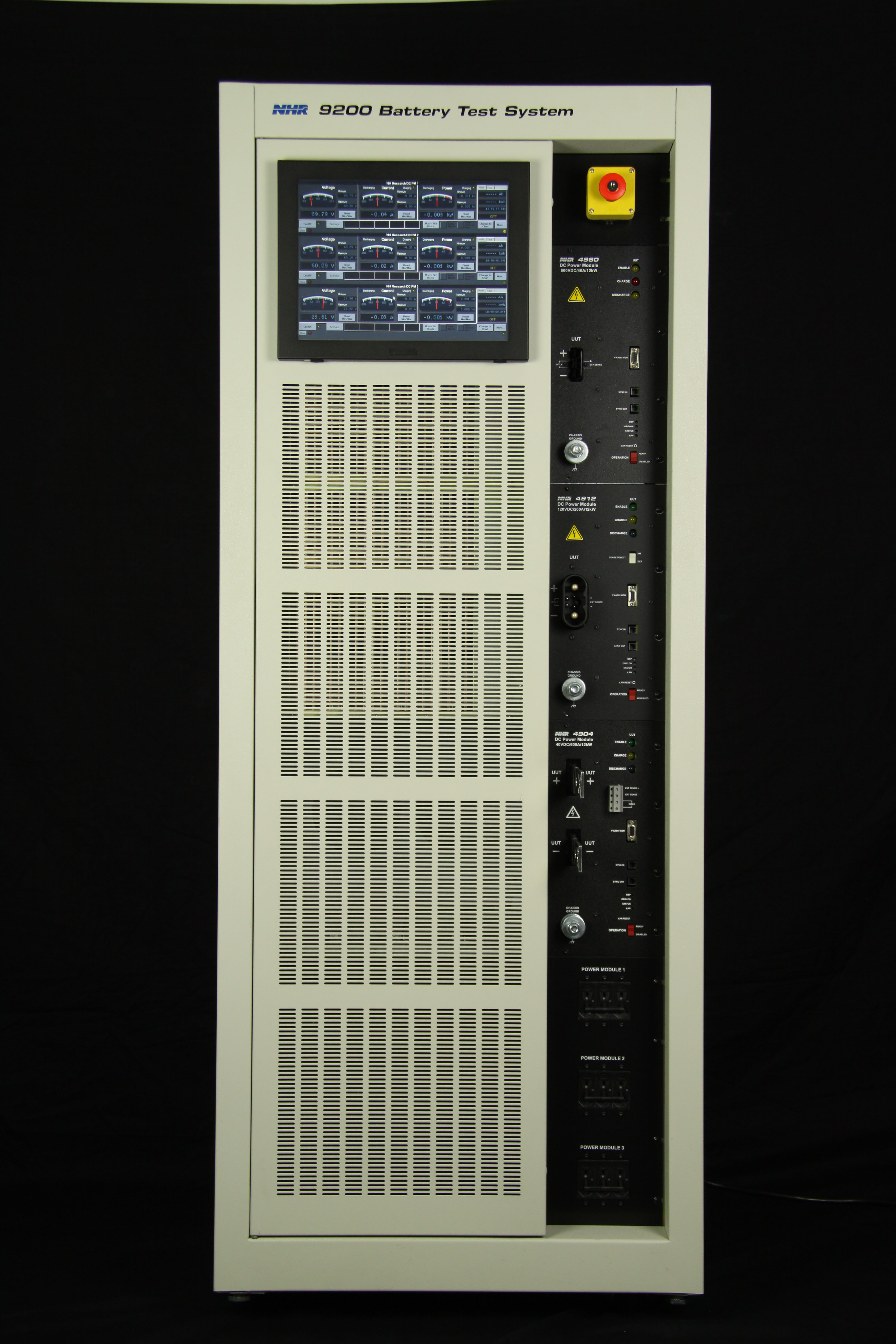 NH Research, Inc., has introduced a 40-volt model in its 9200 family of high-power battery charge/discharge test systems, which are especially suitable for xEV electric vehicle battery power cycling and drive-cycle simulations.
NH Research, Inc., has introduced a 40-volt model in its 9200 family of high-power battery charge/discharge test systems, which are especially suitable for xEV electric vehicle battery power cycling and drive-cycle simulations.
Like the series’ successful 120 V and 600 V members, the new 40 V test system (Model 9200-4904) comprises independent 12-kilowatt DC power modules that enable testing of a number of smaller batteries, each with a different test plan, power level and start/stop times. Alternatively, a higher-power battery can be tested by connecting the power modules in parallel. This configurable flexibility allows a facility to optimize test resources.
The series’ units provide walk-up usability through a graphic user-interface touch-panel mounted on the system. Through this interface, the operator is able to create, run, monitor, chart and report UUT (unit under test) profiles without writing any code. Alternatively, for complex test programs and for tests that require additional data acquisition hardware, users can employ either NH Research’s Enerchron, or their own custom LabVIEW application using the supplied drivers.
For cost-efficiency, up to 90 percent of the energy removed from a battery under test is returned as usable AC power. This process, called regeneration, lowers the total utility consumption of the facility and reduces the amount of generated waste-heat. Further advantages of regeneration include a much cooler work environment, reduced air conditioning loads, and the elimination of elaborate water-cooling systems.
The 9200 series testers simulate real-world conditions with fast voltage, current and mode transition times; include a digital measurement system with high-resolution waveform capture and a digital chart recorder; provide custom waveform/profile generation; and have multiple battery-protection safety features.







